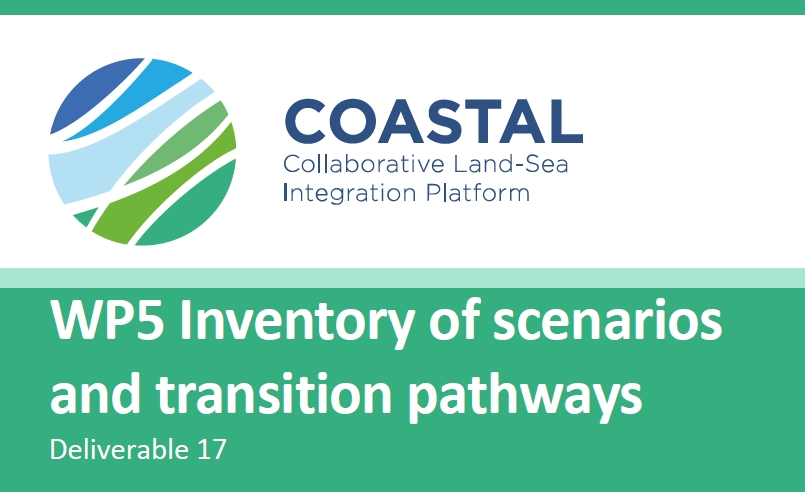Prepared by partners from GRBR (Belgium), ICRE8 (Greece) with contributions from VITO (Belgium), SU NEO (Greece), HCMR (Greece), SU (Sweden), IRSTEA (France), NIMRD (Romania), CSIC (Spain), ICEADR (Romania), SINTEF (Norway), GEO (Hungary) this deliverable from WP5 is to provide an overview of the existing scenarios and transition pathways of the case study partners and at an EU-level in order to give a balanced overview of the information currently available regarding scenarios and transition pathways relevant to the COASTAL-framework. To structure the inventory, a framework has been designed incorporating a literature study focusing on the concepts of scenario and transition pathways.
The information provided, included scientific reports, projects, management plans or even education projects were listed. Effective scenario analysis or concrete action plans with the objective to create a shift from one distinctive state to another were rare. As such, not all received information can be classified as distinct scenario models or pathways. Information availability on the different case studies differed between partners.
The main conclusion to further elaborate WP 5 is to engage further with the MAL-partners for the development of generic scenarios for land-sea synergies and coastal-rural collaborations. Also the methodology and topics chosen will be of utmost importance and should be discussed and decided upon by all MAL-partners. This in close collaboration with WP 2 (System Dynamics Modelling), WP3 (the co-creation of business road maps and in the end, the policy guidelines) and of course interaction with WP 4 as the modelling input and guidance should be in accordance with the vision and expertise of WP4 stakeholders.
D17 will be made public and available in the Resources section upon approval from the European Commission.

